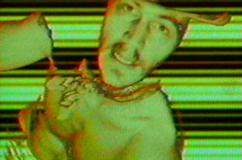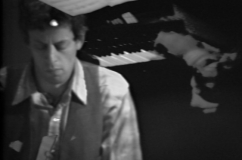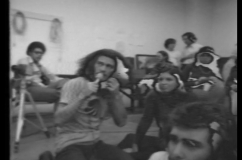
Selections from the Phil Morton Memorial Research Archive
Programmed by Kristin MacDonough | 63 min | 1974 - 1976
In conjunction with the announcement of the Phil Morton Memorial Research Archive Collection, Video Data Bank is pleased to present a new VDB TV program highlighting videos from the Phil Morton Memorial Research Archive (PMMRA). The PMMRA is an archive of early video and media art created and collected by video artist and former School of the Art Institute of Chicago instructor Phil Morton along with his students and collaborators. The collection includes approximately 300 videos, a large portion of which documents the emergence of experimental video and media art education in Chicago during the 1970s as well as video projects Morton pursued after leaving Chicago. Artist and (former) SAIC professor jonCates established the PMMRA in 2007 when he received a generous donation of Morton’s personal archive from Barb Abramo, Morton’s surviving partner. jonCates stewarded the collection until he donated it to Video Data Bank in 2023.
The program, selected by VDB Archive and Collection Manager Kristin MacDonough, features excerpts from videos created during Phil Morton’s time as an SAIC instructor, many of which have been recently remastered for preservation and access:
Rescanning of IEVE (1976) is an edit of video footage captured at the second Interactive Video Visualization event, organized by Morton and his collaborators at the University of Illinois Circle Campus. Dan Sandin, creator of the Sandin Image Processor and frequent collaborator of Morton, provides an introduction to video technology in How TV Works with Dan and Phil (approx. 1975). In General Motors (1976), one of his most completed video works, Morton recorded his phone calls with his local GM dealership on video as he tried to get his 1974 Chevy van repaired, presenting a familiar illustration of consumer frustration. In the edited excerpt, Philip Glass Lecture (1974), the visiting composer talks about repetition in his musical works and how he constructs a piece. Finally, Phil Teaching Video is an edited compilation of three videos (To Deborah, Love Vidiots; W3 Form; and Phil on Special Effects) focusing on Morton’s Socratic teaching style and his emphasis on understanding the technology behind making video and audio.
Many of these excerpts demonstrate the use of the Sandin Image Processor to generate and/or manipulate the video images. Videos might be colorized, solarized, and superimposed, and more using the equipment.
Want to watch more? In honor of Morton’s COPY-IT-RIGHT ethos, a precursor to creative commons licensing, all videos from the PMMRA that are posted on VDB’s website are publicly available to watch in full. Visit the The Phil Morton Memorial Research Archive Collection page to learn more about the history of the collection and browse other titles. (Visit a title’s artwork page to view.) Read more about Morton's vision, collaborators, and history in VDB's collection guide.
Featured Titles
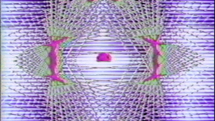
Video from the 2nd Interactive Electronic Visualization Event (IEVE), a collaboration event with SAIC's Video Department and the University of Illinois Circle Campus. Rescanning of IEVE, edited by Phil Morton, includes documentation of the event, video of the artists using the Sandin Image Processor and other synthesizing equipment, and the video and sound created by the artists.
Image Processing by Phil Morton, Audio Synthesis by Bob Synder, Image Generation by Gunter Tetz.
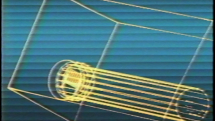
“Hey, how’s that TV work?”
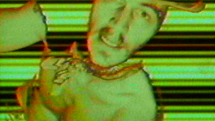
A response to the inability of his local General Motors dealer to fix Morton's 1974 Chevy van to his satisfaction, this tape blends experimental image-processing techniques with documentation of the faulty vehicle. Morton states that he is upset primarily because General Motors "can't get their tech together," and as a video producer involved with using and maintaining high-tech equipment, this strikes Morton as expecially bothersome.

Philip Glass, a pioneer in minimalism in music, gave a two-day lecture at the School of Art Institute of Chicago in 1974. In musical composition, minimalism highlights the repetition of melodic fragments, harmonic progressions, rhythmic structures, etc. Glass’s music is often steady in terms of volume and tempo, then, when introducing slight alterations, the pattern changes become notably audible.
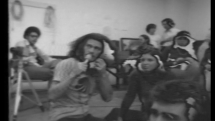
The video content—a live-feed image processing tape—shows intellectual discussion among SAIC Video Area students and faculty members. Instead of being a prescriptive monologue from school to students, Phil sits among the crowd and moderates the session. The decentralized and non-hierarchical academic setting—students and faculty sitting on the floor and cushions in a circle—is typical of the ’70s. At times, students burst into laughter, dancing, and lounging on the floor, hence creating a laid-back environment.






